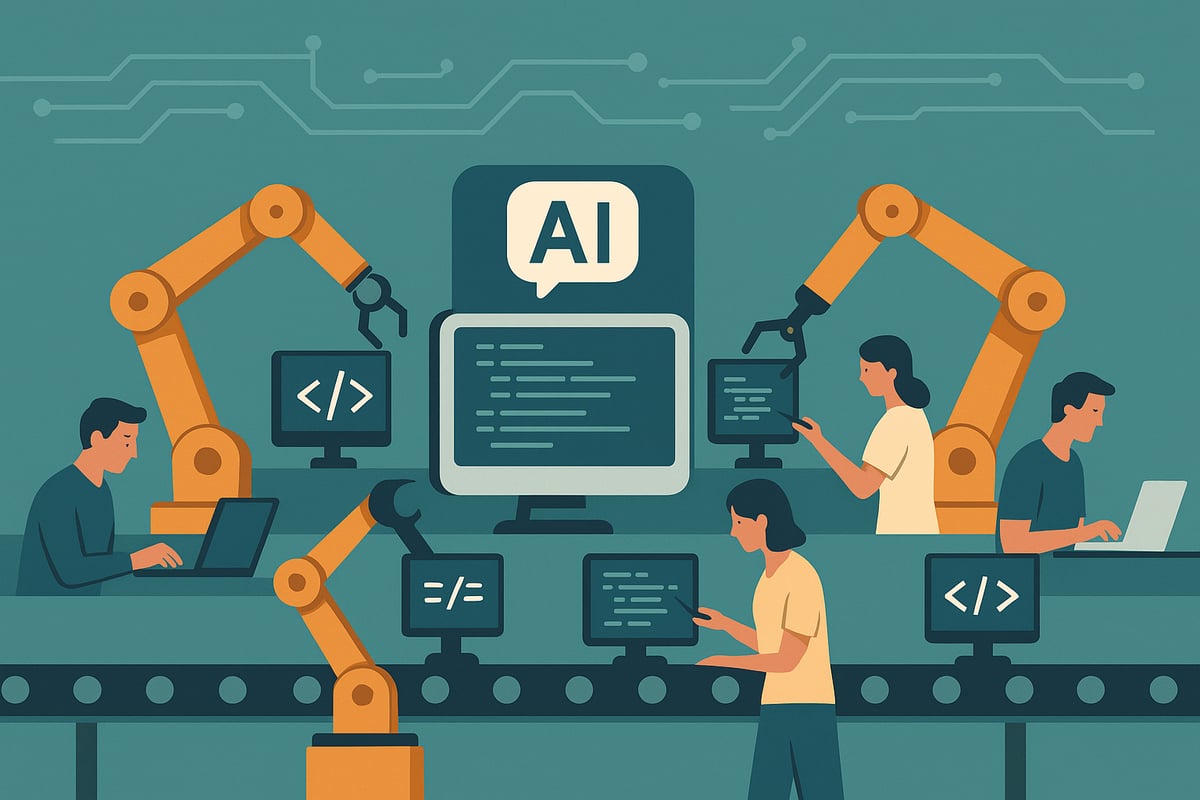
Traditionally, engineers were judged by the quality of their code. Readability, abstraction, and system design were markers of experience and skill. But today, tools like Copilot or Curos can generate boilerplate code, convert legacy logic, and write unit tests faster than most humans.
The semantic intent still matters—but once the AI has enough context, it can express it in production-ready syntax.
This changes the game.
Quality becomes a baseline, not a differentiator. If the AI makes everyone write “good enough” code, what makes one engineer more valuable than another?
AI produces code that’s syntactically correct and stylistically consistent, but rarely exceptional. It tends toward average solutions, not optimal ones. It doesn’t know your architecture, your edge cases, or your company’s technical debt. So while AI might reduce low-quality code, it doesn’t eliminate the need for judgment.
What’s actually happening is a shift in what we mean by “quality.” It’s less about formatting or boilerplate, and more about design, maintainability, and architectural soundness.
Engineers often resist output-based metrics (PR count, lines of code, feature velocity) because they don’t reflect the nuance of engineering. And they’re right.
But if quality is no longer a reliable proxy for impact, and most of the code is generated anyway, what’s left to measure?
Like it or not, throughput is returning as a signal. Not because quantity means quality, but because how much an engineer produces, how fast, and with how few errors, becomes a way to differentiate those who effectively collaborate with AI from those who don’t.
In this context, engineering performance is less about code polish and more about code flow.
During the next years, we may see two distinct profiles emerge in this new landscape.
These are engineers who work hand-in-hand with the AI to deliver features quickly and reliably. They:
Think of them as the modern counterpart to workers on an automated factory floor. The work is accelerated, optimized, and assisted—but still fundamentally repetitive, execution-focused, and constrained.
Then there’s a different breed of engineer. These people:
They don’t just “use AI”—they shape how AI is used across the team. They build scaffolding, design feedback loops, and multiply the impact of others.
In short, they orchestrate. They’re not building every part by hand, but they know what to build, why, and how to delegate it to the right tools and teammates.
Here’s the catch: the AI assembly line operator is the new “entry point” into engineering, but how do you grow beyond that?
If the operator never learns to architect systems, never writes complex logic by hand, never deals debugging deeply embedded issues, how do they become an orchestrator?
The path to seniority used to involve painful debugging sessions, systems built from scratch, and code written and rewritten. That’s how you build instinct and judgment.
If the AI handles all that now, where do those instincts come from?
This is a real and unsolved problem. We might be building a generation of efficient executors with no path to strategic engineering.
And this isn't hypothetical, it’s already happening in fast-scaling tech teams.
A subtler but equally critical risk is that overreliance on AI can erode understanding. Engineers who rely on prompting without truly grasping the codebase may fall into “vibe coding”: assembling software by feel, trusting the AI to “just work.”
But LLMs have limits — even with growing context windows, they can’t hold entire complex systems in memory. And that means engineers must still know what part of the system matters, where to look, and why something breaks.
When you lose that hands-on familiarity with the stack, debugging gets slower. Ownership fades.
AI helps write code faster, but ironically, it can slow teams down when things go wrong, if no one truly understands what was built.
Klarna claims their AI-assisted engineers are delivering what used to take two weeks in two days. That’s not just an incremental gain. That’s a paradigm shift.
Whether you see it as a dream or a threat depends on your role and how much agency you have.
Managers love the velocity. Juniors love the support. Seniors worry: What’s left for me to do?And new engineers? They wonder what to learn now that the AI “knows everything.”
We’re bad at predicting the future, especially in the middle of a revolution we don’t fully understand. But here are some possibilities:
And perhaps most importantly:
The line between tool and user will blur. Some engineers will just use the AI. Others will shape it, tune it, and embed it into workflows. After all, we already saw this happening in the past with other technologies, like during the evolution of DevOps tooling.
Software engineering is not dying. But it is in a shaping phase.
The danger isn’t that we will be replaced, but that we forget how to help people grow and evolve. Because if we automate the journey, we may lose the knowledge needed to lead.
And in that world, the real bottleneck won’t be tools. It’ll be judgment.
Find out if MentorCruise is a good fit for you – fast, free, and no pressure.
Tell us about your goals
See how mentorship compares to other options
Preview your first month
